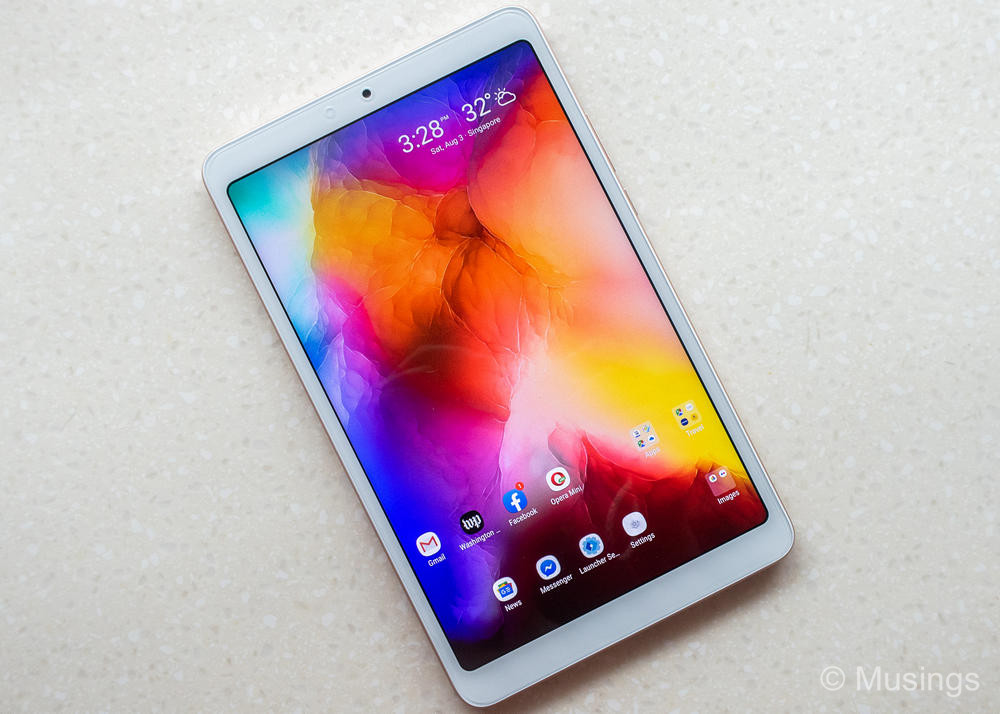It wasn’t so long ago that Steve Jobs – RIP – famously scoffed at large screen phones rival companies like Samsung and Motorola were putting out. He reportedly wondered why would anyone want to buy a phone with a screen that was larger than the 3.5″ displays his iPhones were using. This was almost a decade ago. With the benefit of hindsight, one can see how far off his projections were – it’s basically hard today to find new phones that use 5.5″ or smaller screens.
One consequence of phone screens generally getting larger ever year is also the demise of small form-factor tablets of 7 to 8″ display sizes. After all, why bring along a tablet of 7″ display when you have a phone that’s 6.5″? The large display tablets are still holding steady: e.g. Apple’s iPad Pros, and Microsoft has likewise carved out a market segment for its own line of Microsoft Surface hybrid devices too. However, few Android manufacturers today are still regularly putting out tablets, let alone small ones. The remaining manufacturers who still do so include Samsung, Huawei, and also other China-based manufacturers like Chuwi who’re primarily catering to the domestic market.
The iPad Mini 4 I’ve had is almost three years old now. Any anti-fingerprint or oleophobic coating has long gone, leaving an almost rough texture to the glass screen. And the tablet even feels ever so slightly sluggish these days. So, time for a replacement. Unfortunately, Apple’s replacement in this line of 7.9″ display tablets hasn’t enjoyed the same extent of improvements it includes in its other lines: the iPad Mini 5 (2018) has the same form factor – i.e. thick bezels – same display resolution, no support for face ID, and still stuck with a last generation lightning-type connector for charging and data transfer. The upgrades are largely internal: a quicker processor, an improved display and support for the very pricey Apple pencil, and not even the most recent one at that – and that’s about it. The general feeling among gadget reviewers all point to the same consensus: if you already have a Mini 4 and don’t need the increased processing speed or nicer display, then the Mini 5 isn’t a particularly attractive upgrade.
I was thus pretty reluctant to get the iPad Mini 5, especially at its very high asking price of about SGD770 locally for the basic LTE model. If I was going to be paying that much, I’d like something that has more feature upgrades than just processor and display: like a tablet with smaller bezels and support for USB-C too. So, I went back to look at Android tablets, and specifically at models that were of the 8.4″ display and smaller variety. And of these, I found four contenders:
Huawei MediaPad M5 8.4: very highly praised tablet for its stunning high-resolution display, decent battery life and performance: except that it’s not distributed in Singapore. Priced at about SGD550, few online retailers were carry it. Not much of a user community too. And industry is still watching how is the dispute between Huawei and the current White House administration playing out.
Samsung Tab A 8.0 with Pen: just recently released model from April this year, bundled with a stylus (nice!), so-so performance, and fairly small battery. But like the Huawei MediaPad above, not distributed here – and I found just one online retailer here selling it at about SGD365.
Chuwi Hi9 8.4: available as an imported device from China-based resellers, dirt cheap, very high-resolution display, so-so performance, dismal battery life, and an OS upgrade path that is a little worrying. Not many users of the device, so not much options for custom ROMs. Still, it’s at a practically throwaway price of just SGD201.
Xiaomi Mi Pad 4: another critically acclaimed tablet from the Chinese high tech giant with a reputation for putting out well spec-ed and designed devices and pricing them competitvely. Great build quality, decent screen, fantastic battery life and performance, and at a fairly low price of between SGD300 to SGD320. Importantly, there’s a huge user community too. Like the other three devices, the Mi Pad 4 also isn’t distributed in Singapore. But it’s widely available from both online and as export sets from brick/mortar shops. However – and this was a big issue – the device is intended only for the China domestic market, which means that it’ll come preinstalled with a version of Android sans Google Play services.
I’ve been eyeing the Mi Pad 4 since its announcement a year ago now, but was a little uncertain at that point whether I was up to rooting the device to install a custom ROM that strips off the bloatware that comes with a chinese ROM, and in return adds the absolutely essential Google Play framework and services on it. But after another year where good replacements like the Huawei MediaPad 8.4 that was just not easily available, the Chuwi Hi9 and Samsung Tab A with mediocre battery life, and the iPad Mini 5 costing a bomb for a relatively small upgrade – the Mi Pad 4 beckoned!
There are a number of online retailers at Lazada and Qoo10 carrying the Mi Pad 4, with many offering box unsealed versions with custom ROMs and/or Google Play already installed by the shop. My preference was to get a straight out of factory copy as the thought of having a retailer install stuff on the gadget was a little off-putting. I found one such reseller on Qoo10, and after some checking to be assured that this will be a copy that is still factory-sealed, an order was placed and costing SGD289. Basically, even cheaper than as sold in some of the Chinese-based online stores. After a quick lunch-time collection at their warehouse in MacPherson and another couple hours in the evening testing and then side-loading Google Play services on it, I have a new working and setuped Android tablet.

More in the next post!
Recent comments